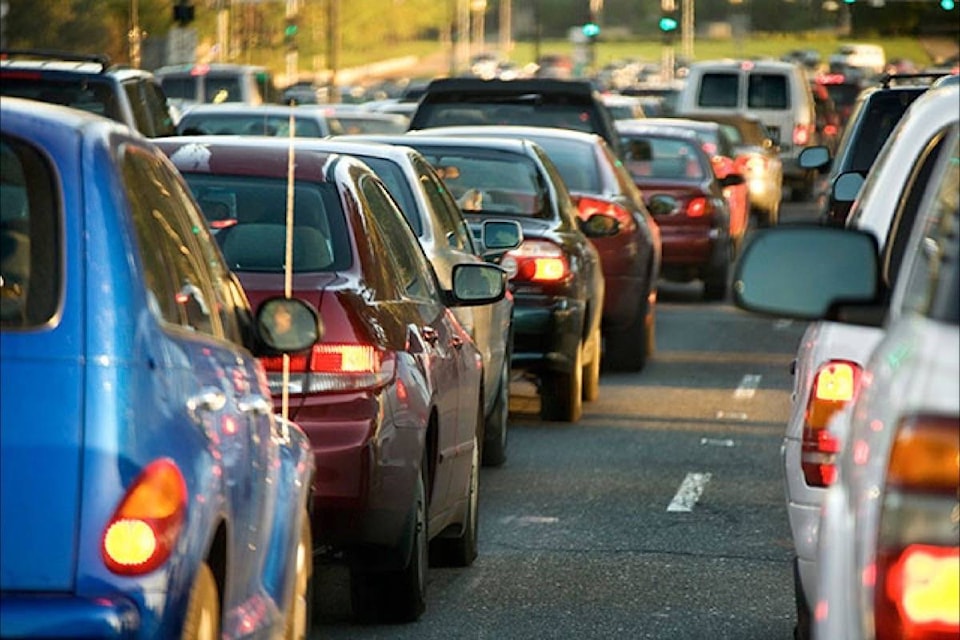I grew up in a home that did not have a family car and although I have always enjoyed walking and don’t have a problem with taking the bus, I still remember the joy I felt when I bought my first car in 1978 – a 1967 Volkswagen Beetle.
I also remember how happy my mom was, especially when I took her for groceries and she was able to leave her two-wheeler grocery tote in the closet, which had served our family for as long as I could remember, having myself taken many turns at hauling the weekly groceries home.
Having a car gave me the freedom I had never experienced; being able to go where I wanted, when I wanted, and feeling safe doing so.
READ ALSO: Maple Ridge gets a bad rap.
Today, I still have that freedom, along with the 23 million other cars that are on our Canadian roads — more than 34 million vehicles if you add in trailers, buses, farm and off-road vehicles. But the joy of it gets tougher every year, because of government treating automobile owners like low-hanging fruit for their coffers. I often wonder why we aren’t speaking out against it.
Gone are the days of a good old-fashioned, car-owner protest like the one that happened in 1976 over proposed increases to ICBC rates.
The Social Credit government had decided to deal with the ICBC debt leftover from the NDP government by declining subsidies to the corporation, opting instead to raise insurance rates by as much as three times the existing rate, which back then was still under $300 for basic insurance.
However, it was substantial for that decade and protestors took to the streets chanting, “Stick it in your ear, McGeer,” referring to the Social Credit MLA, Pat McGeer, minister responsible for ICBC, who took the brunt of the backlash for his cavalier response to the protestors, by telling them to sell their cars if they couldn’t afford the rate.
In the end, the protests paid off and the government eventually reduced the proposed increase.
Not that that had a lasting effect, as we have gone on to pay the highest insurance rates in Canada and ICBC still bleeds money.
Along with protesting against the current insurance system, we have cause to go apoplectic over continually paying the highest gas prices in North America, which is inclusive of the highest gas taxes in all of Canada, yet we accept this fate.
My husband and I are looking into getting an electric vehicle, but common sense tells us that it will only be a matter of time before the mobility tax and some type of infrastructure fee gets added to all vehicles to cover off the lost revenue from bridge tolls, declining fuel sales and the costs associated with the massive amount of infrastructure required for electric vehicles that cities and the province will need to provide.
This will rise exponentially if the province goes forward with the proposed 2040 target date of all cars and truck sold in B.C. having to be zero-emission.
Then there’s photo radar.
Although public outcry prompted the BC Liberals to cancel the program, because it was seen by the public as a cash grab, the present government can’t resist dipping its toe back into the cash flow the technology provides and have announced 35 red-light cameras to be installed throughout the province, two of which will be located at 207th Street and Lougheed Highway and the east end of the Pitt River Bridge.
This new type of “photo enforcement” is intended to reduce the 900 daily crashes that occur throughout the province by targeting intersections where 60 per cent of those accidents apparently happen, which is an understandable goal.
However, in reality, a red-light camera positioned at the east end of the Pitt River Bridge will not just capture the erratic speeder who deserves to be ticketed, but it will also surely catch hundreds, if not thousands, of regular commuters through the years who safely go through the intersection on a “pink” light, which is a common rush hour manoeuvre that a police officer may use discretion on, but a camera won’t.
READ ALSO: Compassion within our communities.
If the government is being honest about this not being a cash grab, why not just use cameras for insurance rulings if an accident actually occurs, rather than putting in a system that tickets the masses who have to endure the realities of every day commuting and are, for the most part, good drivers?
Speed traps are another form of low-hanging fruit that drive me crazy.
Last December, on a Saturday, Maple Ridge and Pitt Meadows experienced a district-wide power outage, which left the light at the Pitt River Bridge inoperable.
Traffic was backed up into Maple Ridge because the intersection was left to function on a four-way stop procedure for most of the day.
Apparently, there had been a traffic cop earlier in the day, but for some reason, it was a short shift. Meanwhile, as I headed east on Lougheed Highway just past 240th Street, I went through a speed trap.
Lucky for me, I obey the rules of the road, so the government didn’t get my money that day, but it affirmed to me that the priority of the traffic division was to make money off of drivers, as opposed to deploying officers to assist drivers.
I am not sure if we are reaching the “stick it in your ear” stage yet, but with the rising costs of insurance and gas, the introduction of photo enforcement and the looming mobility tax, we might just be getting there.
Cheryl Ashlie is a former Maple Ridge school trustee, city councillor, constituency assistant, citizen of the year and currently president of the Alouette River Management Society.
newsroom@mapleridgenews.com
Like us on Facebook and follow us on Twitter
